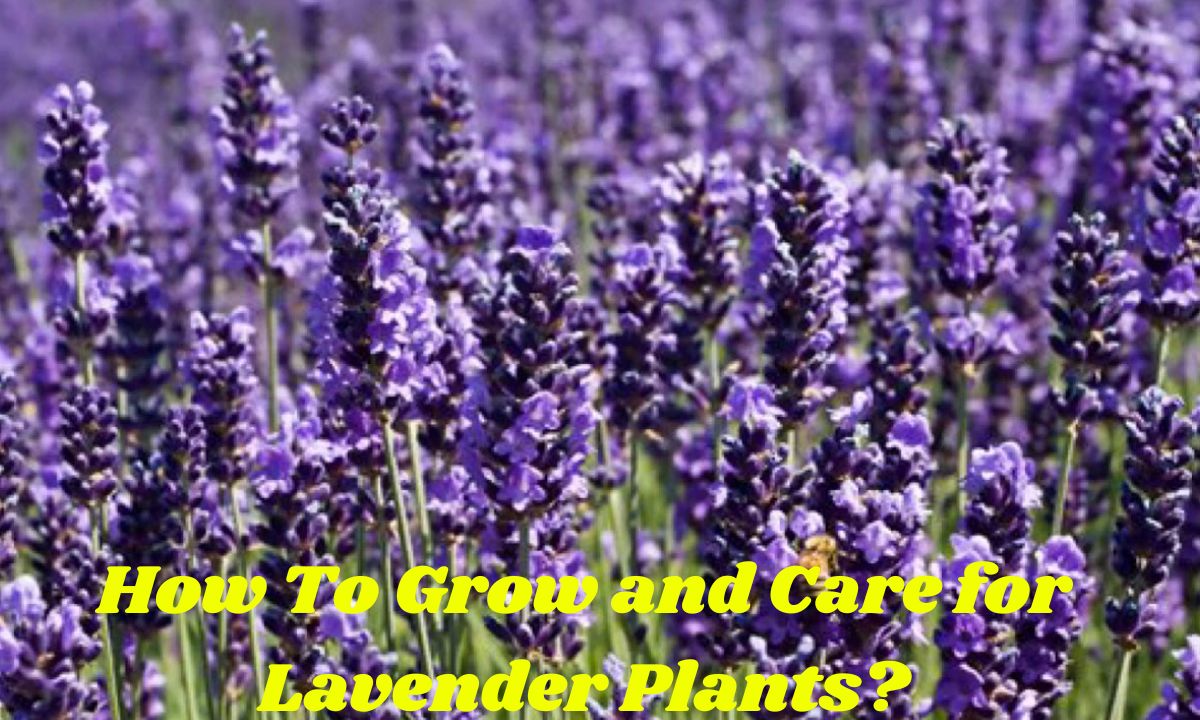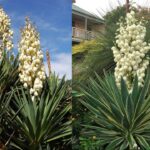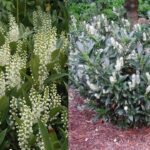Lavender is a stunning herb known for its beautiful purple flowers and calming scent. This versatile plant is not just a visual delight; it also offers numerous benefits. From essential oils to culinary uses, lavender has become increasingly popular in gardens across the U.S.
Growing lavender can be a rewarding experience. However, it requires understanding its unique needs. Proper care ensures that your lavender plants not only thrive but also produce an abundance of fragrant flowers season after season.
In this guide, we will cover everything you need to know about cultivating lavender, from choosing the right variety to mastering the art of harvesting.
Popular Lavender Plants Varieties
When it comes to lavender, several popular varieties stand out. Each has its unique characteristics and ideal growing conditions.
English Lavender
English Lavender (Lavandula angustifolia) is perhaps the most well-known variety. It is cherished for its rich fragrance and beautiful blooms. This variety thrives in USDA hardiness zones 5 to 8, making it a favorite for many gardeners.
English lavender is particularly cold-hardy. It can withstand frosts that might kill other varieties. This resilience makes it ideal for regions with harsher winters. Its high oil content also makes it perfect for essential oils and sachets.
French Lavender
French Lavender (Lavandula dentata) is another favorite, especially in warmer regions. It thrives in USDA zones 8 to 10 and is known for its long-lasting blooms. Unlike English lavender, it has slightly toothed leaves, adding texture to garden beds.
This variety is favored for its aromatic qualities, although its scent is less sweet. The camphor-like fragrance is popular in aromatherapy and potpourri. With its vibrant flowers, French lavender is a striking addition to any garden.
Spanish Lavender
Spanish Lavender (Lavandula stoechas) is easily recognized by its unique flower heads resembling bunny ears. It thrives in warmer, dry climates and is suitable for USDA zones 7 to 9.
While Spanish lavender is often grown for its striking appearance, its fragrance is more pungent than sweet. This variety is perfect for borders, rock gardens, and container planting, adding a splash of color to any landscape.
Lavandin (Hybrid Lavender)
Lavandin (Lavandula x intermedia) is a hybrid between English and Portuguese lavender. This variety is known for its robust growth and large flowers. It thrives in USDA zones 5 to 9, making it adaptable to various climates.
Lavandin is often chosen for larger scale cultivation due to its high yield. It is particularly sought after for the production of essential oils and dried lavender products. Its hardiness and productivity make it a valuable addition to any garden.
Best Growing Conditions for Lavender Plants
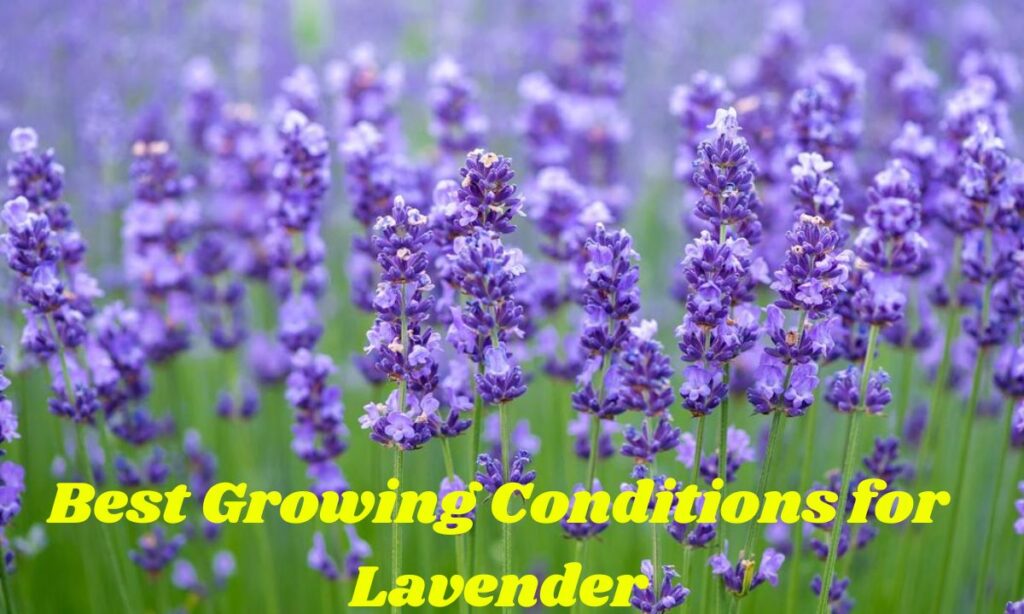
To successfully grow lavender, understanding its ideal growing conditions is essential.
Climate Considerations
Lavender is native to the Mediterranean region, where it thrives in warm, dry summers and mild, wet winters. These conditions are found in many parts of the U.S., especially in the West and Southwest.
However, lavender can adapt to various climates. In regions with harsh winters, gardeners should opt for cold-hardy varieties like English lavender. Understanding your local climate is crucial for selecting the right type of lavender for your garden.
Ideal Soil Types
Lavender flourishes in well-drained soils with a slightly alkaline pH. Heavy, clay soils that retain moisture can lead to root rot and other issues.
To improve drainage, consider amending the soil with sand or gravel. If your garden has poor drainage, raised beds or containers can also be effective solutions. These help prevent moisture buildup around the roots.
Sunlight Requirements
Lavender is a sun-loving plant that requires full sun to thrive. Ideally, it needs at least 6 to 8 hours of direct sunlight daily. In shaded areas, lavender tends to grow leggy and produce fewer flowers.
For gardeners in regions with extremely hot summers, it is vital to balance sun exposure with protecting the plants from excessive heat. Proper sunlight is key to healthy lavender growth.
Also See This: How To successfully Grow Peonies? A Comprehensive Guide
How to Plant Lavender?
Planting lavender correctly is crucial for its success. Here’s how to do it right.
When to Plant Lavender
Timing is essential when planting lavender. In most areas of the U.S., spring is the optimal time to plant, after the threat of frost has passed. This allows the plant to establish strong roots before the heat of summer.
In milder winter regions, lavender can also be planted in the fall. This gives it a head start for robust growth in the spring. Proper timing ensures that your lavender plants thrive.
Choosing the Right Location
Selecting the right location in your garden is vital for lavender’s success. The plant needs full sun, so choose a spot that receives at least six hours of direct sunlight daily.
Good air circulation is also important, especially in humid areas. Avoid planting in low-lying regions where water tends to accumulate, as this can lead to root rot. Raised beds or planting on a slope can help with drainage.
Spacing and Depth
Proper spacing is critical when planting lavender. Space individual plants about 12 to 18 inches apart, depending on the variety and mature size. This spacing allows for adequate air circulation and prevents overcrowding.
When planting, avoid burying the crown of the plant. The crown, where the roots meet the stems, should be slightly above soil level to prevent rot. For container planting, choose pots with good drainage and a well-draining potting mix.
Watering Lavender: How Much and How Often?
Lavender prefers well-drained soil and should be watered sparingly to avoid root rot. Water deeply but infrequently, allowing the soil to dry out between waterings. During hot summer months, once a week is usually sufficient, but reduce watering in cooler seasons.
Understanding Lavender’s Drought Tolerance
One of lavender’s most remarkable traits is its drought tolerance. Once established, it can withstand dry conditions. Native to the Mediterranean, lavender thrives in areas with minimal rainfall.
However, new plants require regular watering during their first growing season. Once mature, they should be watered sparingly. Overwatering is a common mistake that can lead to root rot.
Signs of Overwatering
Signs of overwatering include yellowing leaves, especially at the lower parts of the plant. If your lavender appears limp or develops brown spots, check the soil moisture before watering again.
It’s better to underwater than to risk overwatering. Established lavender should be watered only when the soil feels dry to the touch. Proper watering is key to healthy lavender plants.
Fertilizing Lavender: Is It Necessary?
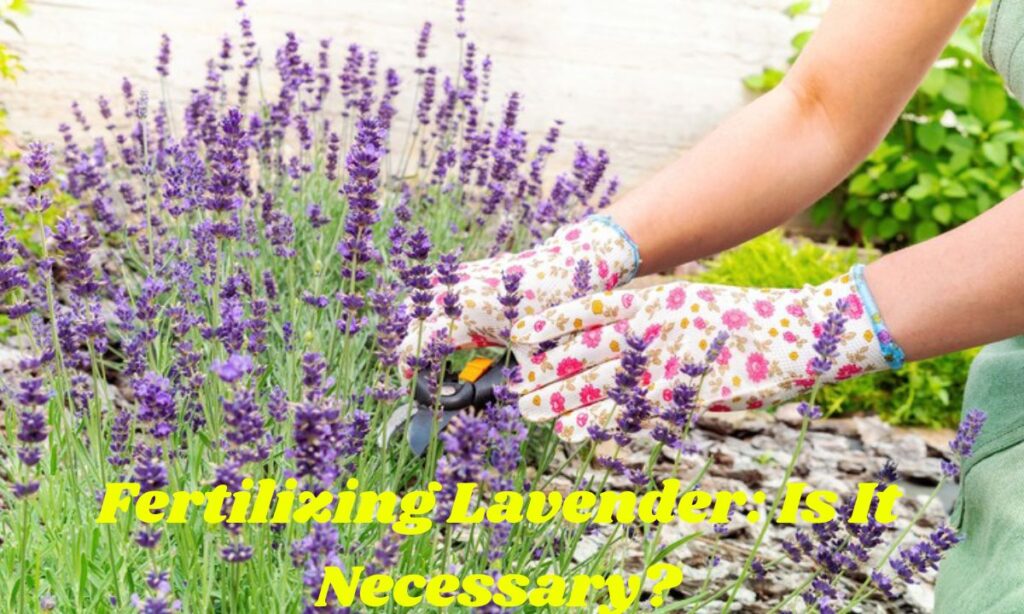
Lavender does not require much fertilization. In fact, excessive fertilizer can do more harm than good. High-nitrogen fertilizers can promote lush foliage growth at the expense of flowers.
Instead of synthetic fertilizers, enrich the soil with organic compost or aged manure before planting. This provides essential nutrients without overwhelming the plant. For container-grown lavender, a slow-release, low-nitrogen fertilizer can be used sparingly.
Pruning for Optimal Growth
Pruning is essential for maintaining healthy lavender plants. It encourages compact growth and increases flower production. Regularly trimming back about one-third of the plant in spring helps promote vibrant blooms and a tidy appearance.
When and How to Prune
Pruning is essential for maintaining healthy lavender plants. The best time to prune is in the spring, just as new growth begins. Use sharp, clean shears to remove about one-third of the plant’s height.
Avoid cutting into the woody stems, as they do not regenerate. Regular pruning encourages a compact shape and promotes increased flower production. Well-pruned plants are healthier and more productive.
Maintaining Shape and Size
Lavender plants can grow quite large, especially in optimal conditions. Maintaining their shape and size is important for both aesthetic and practical reasons. Regular pruning helps keep the plant within its designated space.
If you’re growing lavender as part of a formal border or hedge, consider light pruning throughout the growing season. This helps maintain a neat appearance. Always remove any dead or diseased stems promptly.
Harvesting Lavender
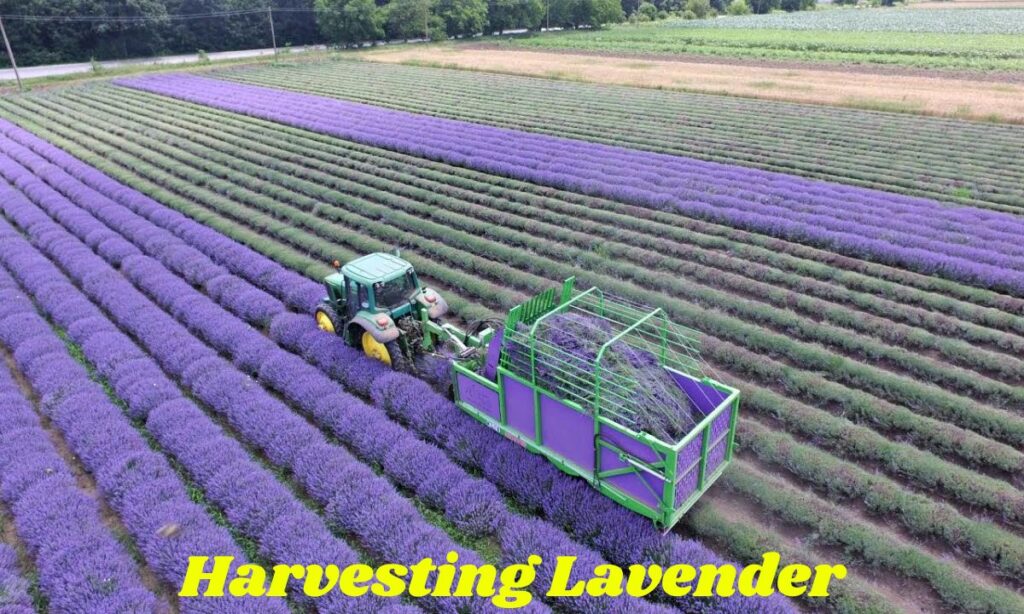
Harvesting lavender is best done in the morning when the flowers are fully open but not yet past their prime.
Cut the stems with a sharp knife or scissors, leaving a few inches of the plant for regrowth. Hang the bunches upside down in a dry, cool area to preserve their fragrance and color.
When to Harvest
Knowing when to harvest lavender is crucial for maximizing its potential. The best time to harvest is when the buds are just about to open. At this stage, the flowers contain the highest concentration of essential oils.
For fresh bouquets, cut the stems when about half of the flowers on the spike have opened. For drying, harvest in the morning after the dew has dried but before the heat of the day causes the plants to release their oils.
How to Harvest it?
Harvesting lavender is straightforward. Use sharp, clean pruning shears or a knife to cut the stems just above a leaf node. Leave some green growth to encourage regrowth.
For larger plants, harvest in sections to avoid overwhelming the plant. Once harvested, bundle the stems and hang them upside down in a cool, dry area to dry. If using fresh lavender, place the stems in water immediately after cutting.
Conclusion
Growing lavender is a rewarding experience that brings beauty and fragrance to any garden. By understanding the specific needs of lavender plants, you can ensure they thrive for many seasons. From selecting the right variety to mastering pruning and harvesting, each step is essential for success.
With proper care, your lavender plants will flourish, providing you with stunning blooms and a delightful aroma. Whether for ornamental purposes or practical uses, lavender is a versatile and low-maintenance addition to any garden.
Frequently Asked Questions
How often should I water lavender?
Water lavender only when the soil is dry to the touch, about once every two weeks in the growing season.
Can lavender grow in pots?
Yes, lavender can thrive in pots, but ensure the container has good drainage and use a well-draining potting mix.
Is lavender deer-resistant?
Yes, lavender is generally deer-resistant due to its strong fragrance.
What pests affect lavender?
Common pests include aphids and spider mites. Regular checks can help manage these pests.
Can I grow lavender indoors?
Yes, but ensure it gets plenty of sunlight and is in a well-drained potting mix.
What is the best time to prune lavender?
The best time to prune lavender is in the spring, just as new growth begins.
How long does lavender take to bloom?
Lavender typically blooms in late spring to early summer, depending on the variety and growing conditions.
Is lavender safe for pets?
Lavender is considered non-toxic to pets but can cause mild stomach upset if ingested in large amounts.
What is the best fertilizer for lavender?
A slow-release, low-nitrogen fertilizer is best for lavender. Avoid high-nitrogen options.
Can lavender survive winter?
Yes, certain varieties like English lavender are cold-hardy and can survive winter in appropriate climates.

FAtima is a talented content writer and digital marketer with expertise in SEO, social media management, and online marketing.
